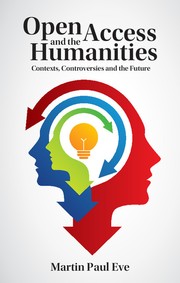
In 2017 Virginia Tech joined eleven other American universities in the launch of a 5-year pilot project called TOME (Toward an Open Monograph Ecosystem)—a bold new effort to change the landscape of scholarly book publishing. TOME is sponsored by the Association of American Universities (AAU), Association of Research Libraries (ARL), and Association of University Presses (AUPresses). All three of these national associations have a stake in ensuring that scholars can continue to write and publish long-form scholarship at a time when university presses find it increasingly difficult to publish monographs due to market-based concerns. The goal of TOME is to move beyond the old, print-based model of publishing and towards a new, more sustainable model—one in which university-funded grants make it possible for presses to publish deserving scholarly monographs regardless of sales potential.
The TOME pilot recently passed its halfway point, which makes it a good time for a progress report. Much of the following comes from the report I gave last October at the third annual TOME stakeholders meeting. (The full presentation can be seen on this page of the TOME website.) Here I want to present just a few of the key takeaways, after which I’ll briefly report on Virginia Tech’s experience with TOME.
As TOME enters the fourth year of the pilot, the early signs are encouraging. Over the first three years we’ve seen:
- The number of participating universities grow from 12 to 20.
- The number of participating publishers grow from 57 to 66.
- Over $1m in grants paid out to participating publishers, resulting in 70 monographs published in Open Access editions with Creative Commons licenses.
Of course, the true test of TOME—whether or not it increases readership—is difficult to judge at this early stage. Scholarly monographs, unlike journal articles, typically take 3-5 years to take root in the scholarly landscape. Nevertheless, here, too, the early signs are encouraging. A preliminary analysis of the first 25 TOME monographs shows that:
- The OA editions are being downloaded (chapters or the entire book) on average 2,566 times. That’s over six times the average sales of the print editions (412).
- The average sales of the print editions is only about 10% less than print sales of comparable books on the publisher’s list (412 v. 445). This suggests that the OA editions are having, thus far at least, a modest impact on print sales.

Now let’s step back and see how TOME is faring at Virginia Tech.
To date, Virginia Tech has funded a total of 10 monographs by faculty in the College of Liberal Arts & Human Sciences (CLAHS) and the College of Architecture & Urban Studies (CAUS). The fields covered include Anthropology, Architecture, English, History, and Political Science. The books were published by four different university presses: University of Cincinnati Press, Cornell University Press, Duke University Press, and University of Florida Press. Altogether, the amount paid out to these publishers was $153,000 (9 grants of $15,000 + 1 grant of $18,000), with each grant being divided equally among the Provost’s Office, the University Libraries, and the faculty member’s college (CLAHS or CAUS).
Alas, it is too early to have much hard data on usage and readership because only one of the 10 Virginia Tech-funded monographs, A Colonial Affair by Danna Agmon, was published in time to be included in the list of the first 25 TOME titles. Still, the data on downloads and sales for Agmon’s book (shown below) are consistent with the previous graph.


Note that downloads of the OA edition (2,001) are more than eight times the sales of the print edition (237). Additionally, the OA edition has been accessed from at least 38 countries. This is especially important for scholars such as Agmon, who work on subjects outside of North America. (A Colonial Affair examines the history of French colonial India.) Indeed, one goal of TOME is to show that sales figures alone fail to capture the true value of scholarly monographs. An OA edition can reach a larger, more global readership both inside and outside the academy. In the end, this advances Virginia Tech’s core mission to be a global land-grant university.
Virginia Tech has committed to funding 5 more monographs between now and the end of 2022. If you are a faculty member at Virginia Tech and you are writing a monograph that you’d like to be considered for TOME, please contact me at PJP33atVT.EDU.
TOME books by Virginia Tech authors:
- A Colonial Affair: Commerce, Conversion, and Scandal in French India by Danna Agmon (Cornell 2017)
- The Democracy Development Machine: Neoliberalism, Radical Pessimism, and Authoritarian Populism in Mayan Guatemala by Nicholas Copeland (Cornell 2019)
- The Birth of Energy: Fossil Fuels, Thermodynamics and the Politics of Work by Cara Daggett (Duke 2019)
- Tempting Fate: Why Nonnuclear States Confront Nuclear Opponents by Paul C. Avey (Cornell 2019)
- Exploring the Architecture of Place in America’s Farmers Markets by Kathryn Clarke Albright (Cincinnati 2020)
- Heaven’s Interpreters: Women Writers and Religious Agency in Nineteenth-Century America by Ashley Reed (Cornell 2020)
- Writing the New World: The Politics of Natural History in the Early Spanish Empire by Mauro Jose Caraccioli (Florida 2021)
- Irregular Unions: Clandestine Marriage in Early Modern English Literature by Katharine Cleland (Cornell forthcoming)
- Recasting Islamic Law: Religion and the Nation State in Egyptian Constitution Making by Rachel M. Scott (Cornell forthcoming)
- Monetary Authorities: Capitalism and Decolonization in the American Colonial Philippines by Allan Lumba (Duke forthcoming)






